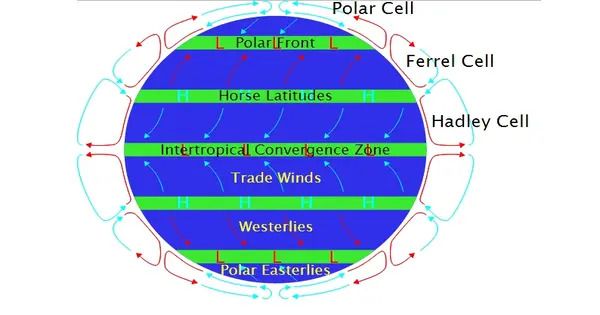In meteorology, prevailing wind is a surface wind that blows mostly in one direction. These are the dominating winds that blow in a single direction over a specific area or region. The dominating winds are the wind directions that have the greatest speed over a specific point on the Earth’s surface at any given time.
The prevalent and main winds of a region are determined by worldwide patterns of movement in the Earth’s atmosphere. They are impacted by elements such as the earth’s rotation, land and water distribution, and atmospheric pressure systems. Prevailing winds have a tremendous impact on global temperatures, weather patterns, and ecosystems.
Winds are primarily easterly at low latitudes around the world. Westerly winds are prevalent in the mid-latitudes, and their strength is heavily influenced by polar cyclones. In locations with mild winds, the sea breeze/land breeze cycle is the most important cause of the prevailing wind; in areas with varying terrain, mountain and valley breezes dominate the wind patterns. Highly elevated surfaces can cause a thermal low, which consequently enhances the wind flow in the surrounding area.
For example, in the United States, the prevailing westerlies blow from west to east across much of the country, influencing weather patterns and climate from the Pacific coast to the Atlantic coast. Similarly, the trade winds, which blow from the northeast in the Northern Hemisphere and from the southeast in the Southern Hemisphere, are important for navigation and climate in tropical regions.
Understanding the prevailing winds is critical for activities like sailing, aviation, agriculture, and weather forecasting. They can also have an impact on the distribution of pollutants and airborne particles, as well as the transmission of illnesses and contaminants between regions.
















